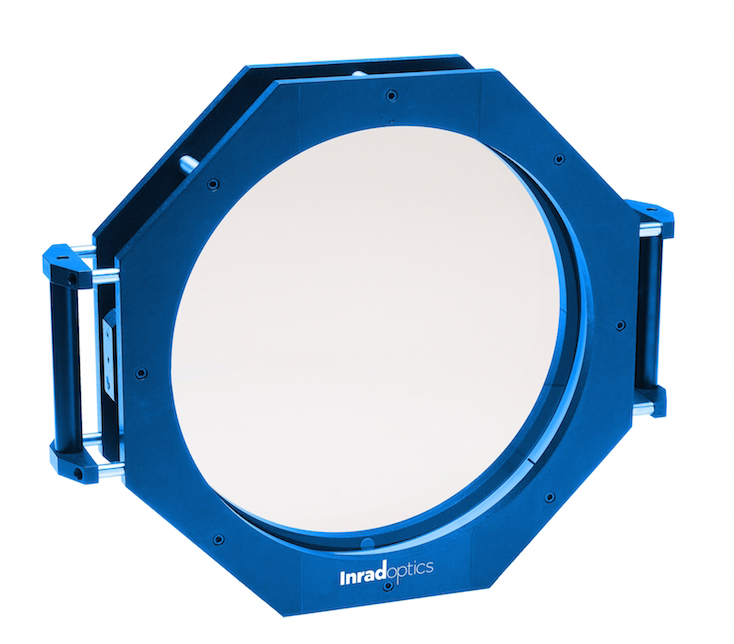In any optical assembly, the biggest challenge is balancing the optical and mechanical specifications, which can be at odds with each other. A recent case in point is an external flight window designed for high-resolution airborne imaging.
This project had demanding optical requirements for flatness, visible and near infrared transmission passbands, environmental durability and coating uniformity. Not only that, but the window assembly had some unexpected mechanical design issues. We were able to identify and fix those issues and meet the system performance requirements as the design matured. Here’s how:
Optical Assemblies Raise Mechanical Questions. Like all optical assemblies, it was important for us to select the proper raw material, surface treatment, geometry and packaging to ensure it achieved the tightest alignment and dimensional tolerances.

12” window polished to λ/20 wave with low-stress optomechanical mounting
In addition to meeting the demanding optical wavefront distortion requirements, we had to ensure that the assembly was capable of maintaining this performance standard over the full operational temperature range from the extremes of arctic cold to tropical heat. This required careful management of the interfaces between materials of dissimilar thermal expansion coefficients, as well as extensive analysis of thermal, optical and mechanical test parameters to mimic field conditions. How fast should we heat the window assembly? How uniform should heat application be? Do we heat the window or its frame first?
Thermal Issues During Functional Testing. Because optics typically work as part of an assembly, our engineers always look to identify any assembly-related stresses. This ensures optimum optical performance at the system level. All of our assemblies undergo rigorous testing to make sure the final product works the way it’s supposed to. This part of the process is always the most interesting because it often yields surprising results.
The aerospace window assembly was no exception. We anticipated that when exposed to non-ambient temperatures, the assembly would uniformly heat or cool, but our testing process revealed a pronounced thermal gradient. To compensate for this gradient, we added insulation to the top of the frame and achieved far better stability results in the second round of tests, ensuring the window would meet its real-world requirements.
The process implemented to build this window assembly is just one example of our expertise in durable optical coatings, large high-precision optical flats and mechanical design for extreme environments.
To learn more about our optical assembly capabilities, visit www.inradoptics.com/capabilities/optical-assemblies or email us at This email address is being protected from spambots. You need JavaScript enabled to view it..
